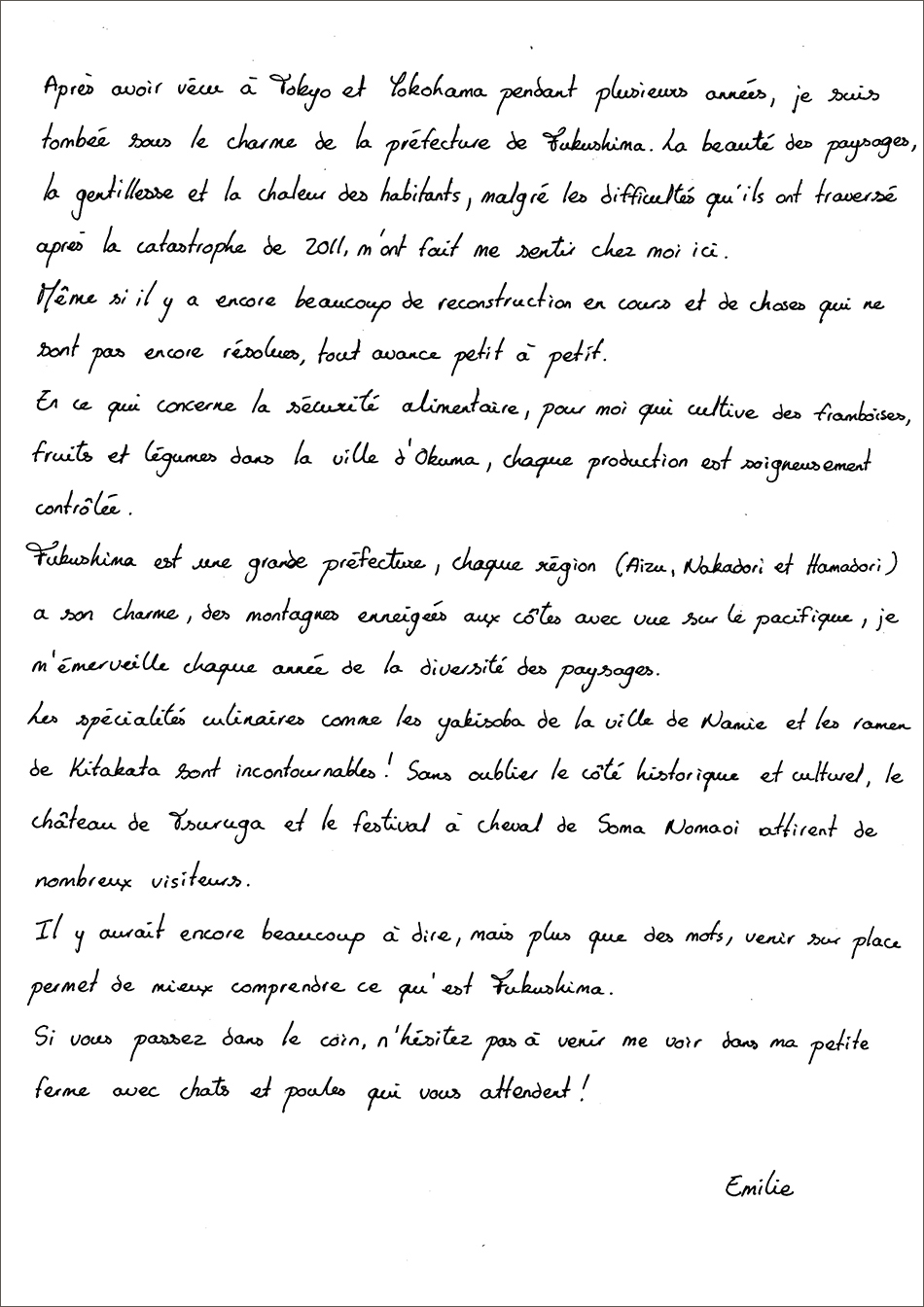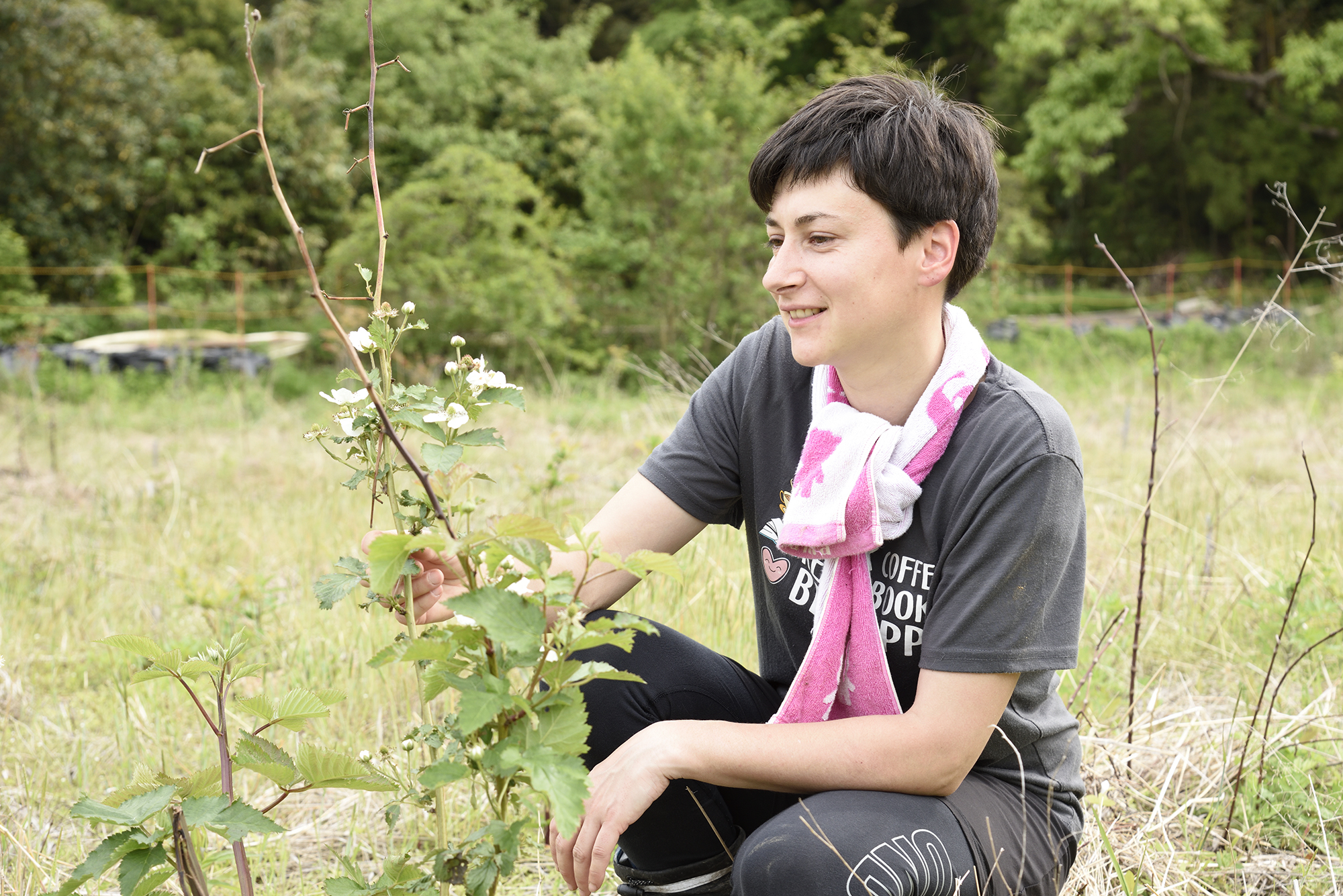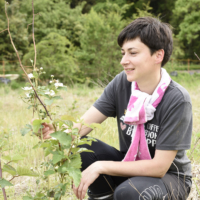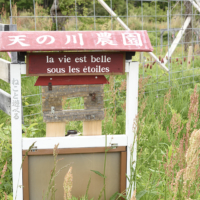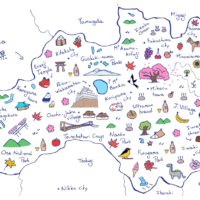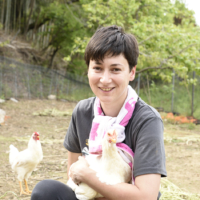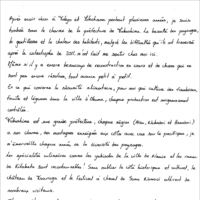Driving around the country lanes of the town of Okuma in Fukushima Prefecture’s Hamadori region, visitors might spot a painted sign in Japanese saying “Amanogawa (Milky Way) Farm.” This is where French national Emilie Bouquet is carving out her dream of ecological farming. Having arrived in Okuma in February 2023, Bouquet lovingly tends to her raspberries along with other berries, vegetables, flowers and herbs on 1.7 hectares of land, with some amiable cats and a flock of fluffy chickens as her companions.
The road to Fukushima
Growing up in pastoral Brittany, Bouquet was interested in ecology from a young age. She speaks fondly of childhood memories of picking and eating wild blackberries during summer vacations, as well as enjoying her mother’s homemade blackberry jam.
After finding little opportunity to pursue her areas of interest in college in France, she turned her attention to Japan. Influenced by her older siblings’ interest in manga and anime, she visited several times as a tourist before deciding to try living and working here.
“I arrived in Tokyo just after the 2011 Great East Japan Earthquake. At that time, there probably weren’t even 10 people on the plane!” she recalled. “My parents were worried, but I insisted on going.”
Bouquet taught language classes in Yokohama and Tokyo for some years. However, she found herself gravitating toward Fukushima, after initially visiting in 2018 on the recommendation of a student who had grown up in the prefecture. She subsequently made the move to the city of Aizu-Wakamatsu in 2021, before relocating a year later to Iwaki, where she started searching for suitable farmland to pursue her passion for ecological agriculture.
She was keen to settle in an area impacted by the 2011 nuclear disaster and contribute to regional recovery. A chain of chance meetings eventually led her to Okuma, one of two towns hosting the defunct nuclear power plant, beginning with her former student from Fukushima and culminating in a connection with a farmer whose hometown happened to be Okuma. She is grateful for each and every link in the chain that brought her here.
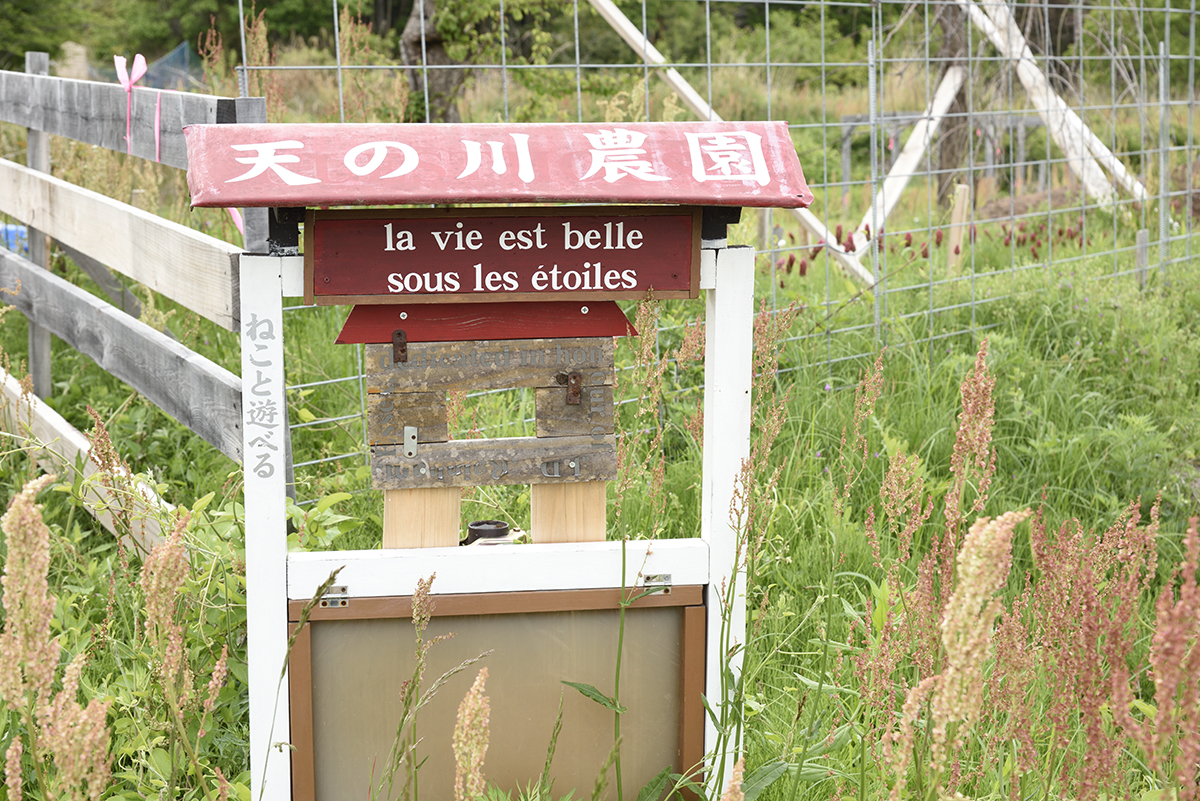
Building bonds, forging friendships
Bouquet says the warmhearted residents are one of Okuma’s biggest draws, noting they were very generous with sharing their time and knowledge, especially when she was just starting out. “I had never met these people before, but they were so warm and welcoming,” she said.
In particular, she has formed deep bonds with three older men and meets up with the trio of former classmates on a regular basis to work and socialize. They’ve since adopted her as the fourth member of their close-knit group.
“That shows how much trust and confidence we have in each other,” she said. “And as a result, I’ve been told that my Japanese intonation now sounds like that of an older guy!”
She has also become skilled in the art of the oyaji gyagu — the cheesy Japanese puns often compared with “dad jokes.”
That’s not to say she’s never felt misunderstood here.
“For example, when someone said, ‘Oh, Emilie, you’re not Japanese so you wouldn’t understand, you’re a foreigner,’ I felt a bit hurt,” she said. “But of course, that person has never lived abroad. If you’ve been the foreigner yourself, then you understand how these words might hurt someone’s feelings.”
Bouquet believes that having more international residents in Fukushima would bring positive changes in this respect.
“As the number of foreigners increases, government officials will probably become accustomed to interacting with them and will be inclined to consider how to communicate with them more effectively,” she noted. And while she treasures her Japanese friendships, she’d also love to have a few foreign friends to chat with now and then.
The art of creating a lifestyle
Currently, Bouquet combines her farming activities with freelance illustration work and teaching French online. She sells a wide range of goods based on her original art, such as stationery, T-shirts and keyholders. Many of her designs feature her whimsical renderings of characters based on akabeko, the red cow figurines that are a beloved symbol of Fukushima. She’s also been contributing to tourism, having created a playful illustrated map of Fukushima Prefecture. Now she’s working on a similar map for Okuma.
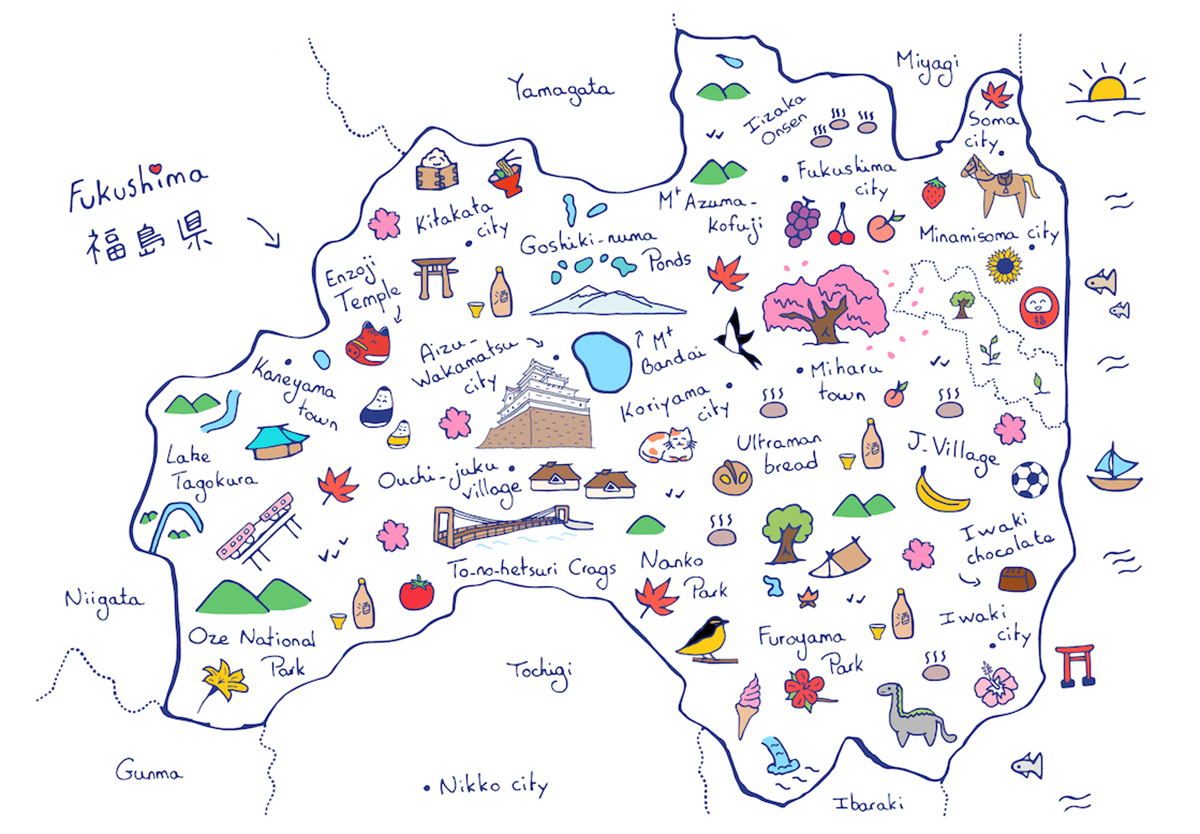
She says that while she currently devotes most of her time to farming, the majority of her income still derives from artistic endeavors.
“It would be great if that balance could change in the future,” she said with a laugh. Looking ahead, Bouquet hopes to keep working on her farming in her own way, gradually discovering the best practices in harmony with the seasons and the land.
Bouquet also loves being surrounded by nature in Okuma and finds the mountains a continual source of fascination. “On rainy days, the mountains disappear. So, if I start to lose sight of them, then I know it’s about to start raining,” she pointed out. “I don’t even need to look at the weather forecast anymore.”
“Okuma still inevitably brings to mind the image of the nuclear power plant. For those who are interested, there’s Hope Tourism, where people can learn about the disaster-affected areas. That’s important, of course, but I really hope people will explore other parts of the town as well,” she said, adding that Okuma is particularly beautiful when the cherry blossoms are blooming or during fall foliage season.
After more than two years in Okuma, Bouquet can’t imagine living anywhere else.
“If I go to Tokyo, for example, it’s so busy and the buildings are so tall that you can’t see the sky. It’s a different world, and I find myself wanting to return to Okuma as soon as possible.”
Warm welcome for all
For anyone who is curious about life in rural Fukushima, Bouquet’s advice is simple: “You should do it. Just come and see for yourself,” she said. “I’d be very happy if someone reads this and thinks they would like to live in Okuma.”
After the town-wide evacuation in 2011, residents were finally permitted to return to some parts of Okuma in 2019. Returnees and newcomers alike have been uniting to bring a renewed sense of vigor to Okuma, and new housing, commercial and welfare facilities have been completed. There are various opportunities for those seeking work or trying to start a business, too.
Bouquet said a wide range of support programs exist for people thinking of moving to more rural regions of Japan — not only at the national level, but also at the prefectural and municipal levels.
For example, she initially consulted the Furusato Kaiki Shien Center (Hometown Return Support Center) in Tokyo, which referred her to a relocation coordinator from Fukushima. The coordinator subsequently helped her to obtain information on a subsidized trial residency plan. She encourages other foreign residents to investigate the various options available.
As for Bouquet’s parents, who were so worried when their youngest child left for Japan in 2011, how do they feel now about her choice to settle and farm in rural Fukushima?
“Well, at first, they told me to think it over carefully. But then they came to visit me in November 2023 and they loved it here. They also visited Osaka, but they found it much too crowded, so returned to Okuma earlier than planned,” she said, smiling at the memory.
A letter from Emilie Bouquet
Having spent several years in Tokyo and Yokohama, I found myself captivated by the charm of Fukushima Prefecture. The stunning landscapes and the kindness and warmth of the people, despite the hardships they endured after the 2011 disaster, made me feel truly at home here.
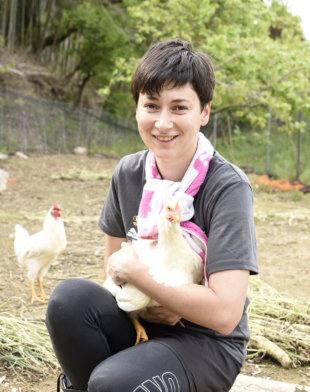
Although much reconstruction remains and some issues are yet to be resolved, steady progress is being made.
As someone who grows raspberries, fruits and vegetables in Okuma, I ensure that every aspect of production is carefully monitored to maintain food safety.
Fukushima is a vast prefecture, where each region — Aizu, Nakadori and Hamadori — offers its own unique charm. From snow-capped mountains to Pacific coastlines, I am amazed every year by the stunning diversity of its landscapes.
Culinary specialties such as Namie’s yakisoba (stir-fried noodles) and Kitakata’s ramen are an absolute must-try! Fukushima’s rich history and culture are also on display, with landmarks like Tsuruga Castle (officially referred to as Wakamatsu Castle) and events like the Soma Nomaoi horse festival drawing many visitors.
But words can only go so far. Visiting is the best way to truly understand what Fukushima represents.
If you’re ever in the area, feel free to stop by my humble farm. I’ll be there with my cats and chickens!
